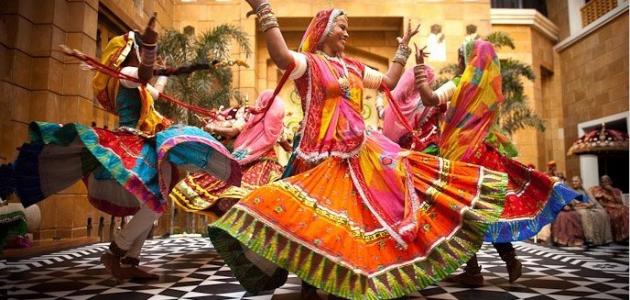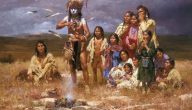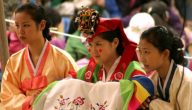معلومات عن الهند العادات والتقاليد بالانجليزي نقدمها اليكم في هذا المقال وفي هذه السطور التالية.
الهند
تعد الهند مهد حضارة وادي السند ومنطقة طريق التجارة التاريخية والعديد من الإمبراطوريات. كانت شبه القارة الهندية معروفة بثراوتها التجارية والثقافية لفترة كبيرة من تاريخها الطويل. وقد نشأت على الأراضي الهندية أربعة أديان رئيسية هي الهندوسية والبوذية والجاينية والسيخية، في حين أن الزرادشتية، اليهودية، المسيحية والإسلام وصلت إليها في الألفية الأولى الميلادية، وشكلت هذه الديانات والثقافات التنوع الثقافي للمنطقة. تاريخياً، أسندت إدارة الهند إلى شركة الهند الشرقية البريطانية في وقت مبكر من القرن الثامن عشر، ثم استعمرت من قبل المملكة المتحدة في الفترة من منتصف القرن التاسع عشر إلى منتصف القرن العشرين، ثم استقلت الهند في عام 1947 بعد حركة الكفاح من أجل الاستقلال التي تميزت على نطاق واسع بالمقاومة غير العنيفة
معلومات عن الهند
India is a country located in the south of Asia. Its capital is New Delhi, its population is 1,185,680,883 inhabitants and its surface is 3,287,590 km² (349 inhab./km²).
Geography
India is a country with several climates, located in South Asia, crossed by the Tropic of Cancer. It is the largest country in South Asia. India is made up of several small islands like Nicobar, Andaman and the
Laquedives Archipelago. In the south of India is the island of Sri Lanka nicknamed “the tear of India”. India is the seventh largest country in the world.
Demography
India is one of only two countries (with China) to count more
of 1 billion inhabitants. It is thus the second most populous country in the world.
Relief
India has several mountain ranges, the most famous of which is called the Himalayas.
The Himalayas is home to the 14 highest peaks in the world, some of which are over 8000 meters high. The most famous peak in the Himalayas is Everest, which is located in Nepal. The highest peak in the Himalayas in India is Mount Kangchenjunga.
To the south of the country are the Western and Eastern Indian Ghats surrounding the Deccan Plateau, which forms a large part of central India. The most famous mountains of the Indian Ghats are the Niligiri Mountains that separate the state of Tamil Nadu from that of Kerala.
Climate
In northern India (Ganges Valley), summer sets in as early as April, with scorching heat from May. The monsoon arrives in June and lasts until the end of September; the rains are abundant. The climate is dry and hot from November to March. In the mountains, the winter is rigorous and the summer is mild. Central India is comparable to the savannah climate in Africa.
There are three main periods: the hot season, the wet season and the cool season. In the great northern plains, conditions can be very severe in March. The northwest of the country is occupied by one of the main deserts of the land, the desert of Thar.
Southern India has many climates, there are wet, tropical and mountainous areas such as Kerala or Karnataka, or a dry and hot climate, like Tamil Nadu or part of Andhra Pradesh.
The Indian climate attracts each year during major migrations, millions of birds from Central Asia and Siberia and even from Central Europe and Scandinavia who spend the winter in northern and central India such as the crane damselfly and the goose with crossed head.
Policy
Government
India is a secular democracy headed by a prime minister and a president, but it is the prime minister who has the most power. Indian territory is divided into states and territories headed by a governor elected by the population of the state concerned.
Flag
Flag of India
The colors of the Indian flag have meanings:
Saffron for Courage and Strength.
White for Purity, Peace and Harmony.
Green for Nature and Fertility.
In the center, the Ashoka Wheel (also known as the Ashoka Chakra) symbolizes dynamism and movement. This wheel has 24 spokes (Vishnu disc).
Economy
India is an emerging power with China, Russia, Brazil and South Africa
Economic development
Twenty years ago, India was crumbling under huge debts, Indian Prime Minister Rajiv Gandhi decided to open India to the market economy and this action produced unprecedented economic development. The economic situation of the country continues to improve, the living conditions of the Indians also continue to improve. Today, India is one of the most important global and regional powers for the future of the planet. India today is a great power in the world, a very large middle class in numbers, but millions of Indians are still poor because of the social prejudice that accompanies them.
Mumbai, the economic capital
The economic capital of the country is Mumbai (Bombay). Mumbai is home to the Indian Stock Exchange and Mumbai is also home to the world diamond price. Central Bank of India is also located in Mumbai.
Agriculture
India produces mainly tea, wheat and rice. It is one of the countries that use irrigation.
Some agricultural products from India
History of agriculture
Agriculture has been present in India for millennia, many civilizations that ruled India practiced agriculture and participated in agricultural development in India. Sixty years ago, India organized and
experimented with a green revolution in the country, which was ravaged by food shortages and malnutrition. After experimenting with this agricultural revolution, agricultural production in India increased twice as much.
Culture and heritage
In India, cows are sacred and so it is common to be stuck in a car by a herd of cows that circulate freely in the city. Elephants are also sacred.
تقاليد الزواج في الهند
هناك نوعا من تقاليد الزواج في الهند و الذي يعتمد على اختيار الرجل المناسب للزواج من خلال ضربه بالعصا على الرأس و الظهر والرجل الذي يستطيع التحمل هو الرجل المناسب للزواج.
There is a kind of marriage tradition in India that depends on the choice of the right man to marry; by beating him with the stick on his head and back, and the man who can bear the beating is the one who is suitable for marriage.
رقصة العظام
رقصة العظام عادة غريبة ومنتشرة في مدغشقر حيث تعتمد على استخراج عظام الموتى من قبورهم ويرقصون معهم ويقومون باعداد الولائم الكبيرة لهذه المناسبة. يقوم الأشخاص بالتحدث الى العظام واستفسارهم عن الاحداث التي مروا بها منذ موتهم. يعتقد سكان هذا المكان أن أرواح الموتي تتلاقى مع الأحياء في هذ اليوم.
Bone dancing is an weird and widespread tradition in Madagascar. It relies on the extraction of the bones of the dead from their graves, dancing with them, preparing for the major festivities on this occasion, and speaking with the bones of the deceased; to ask about the events he has experienced since his death. the inhabitants of this place think that dead souls meet together with the livings in this day.
يقوم سكان Lop Buri بتايلند كل عام في شهر نوفمبر بتحضير موائد كبيرة من الفاكهة و الخضروات, الحلوى والكيك لأجل القرود. يتجمع مئات من القرود المحظوظين ليستمتعوا بهذا العيد حيث يقف السياح لمشاهدة هذا المشهد الغريب. تعتبر هذه المدينة مأوى لأكثر من 2000 قرد. تتجول القرود في الشوارع بحرية وكأنهم من سكان هذا البلد.
Annually in November, residents of Lop Buri, Thailand, prepare a great table of fruit, vegetables, sweets and cakes for monkey sake! Hundreds of lucky monkeys meet to enjoy this feast while tourists watch this strange scene. The city is home to more than 2,000 monkeys. The monkeys roam the streets freely, as if they were the owners of the country.
موضوع عن الهند بالانجليزي
The official language of India is Indian and is spoken by 40 percent of the population. India has about a thousand non-official languages such as Punjab, Urdu, Bengali, English and other languages. India has a huge biological diversity. India is rich in many species of birds, plants and animals. Official religion in India is the Hindu religion and is condemned by most of the population. There is also Islamic religion and is condemned by about 12 per cent of the population. There is also the religion of Sikhism, Buddhism and other religions. Despite the diversity of religions in India, it is classified as a secular country of the first degree as stated in the Constitution.
India is a republican system, a parliamentary system and a federal system. India has many universities and schools and education is compulsory until the 14th. India is one of the world’s major economies. India has the third largest army in the world and is also a country with a nuclear weapon. Despite India’s economic progress, it suffers from ignorance, poverty and malnutrition due to the large population.
India’s climate is diverse, with dry tropical climate, wet tropical climate, subtropical climate and mountain climate. India has a lot of customs and traditions some strange and some acceptable such as suicidal drowning habits. Where an Indian hires a person who drowns him to death. If he is afraid of drowning, the person should not retreat from being drowned. And continues to sink him to death.










